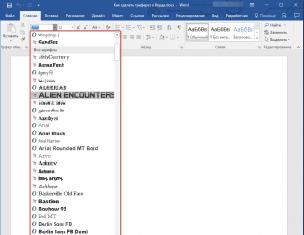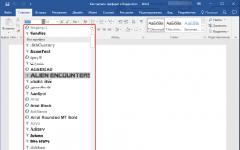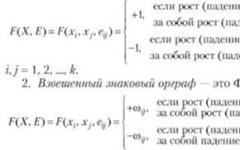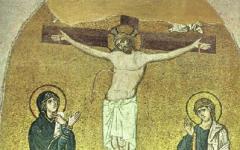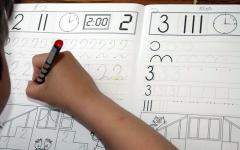Урок 15 . Различные магазины и покупки.
Цели деятельности педагога: совершенствование навыков чтения и вопросно - ответной работы по тексту; активизация лексических и аудитивных навыков; развитие орфографического навыка; памяти и мышления; воспитание сознательного отношения к учебной деятельности.
Тип урока: комбинированный
Планируемые результаты(предметные): А: слушать и понимать текст, построенный на знакомом языковом материале; Г: высказывать предположения, используя образец; Ч: читать вслух, используя основные правила чтения, понимать значение слов; П: составлять вопросы с глаголом-связкой to be
Универсальные учебные действия(метапредметные):
Личностные: ориентация в социальных ролях и межличностных отношениях; социальная мотивация учебной деятельности.
Регулятивные: выделять и формулировать то, что уже усвоено и что еще нужно усвоить;адекватно воспринимать предложения учителя по исправлению допущенных ошибок;сличать способ действия и его результат с заданным эталоном с целью обнаружения отклонений и отличий от эталона; применять установленные правила в планировании способа решения;
предвидеть возможности получить конкретный результат при решении задач.
Познавательные: использовать модели для решения задач; осознанно и произвольно строить высказывания в письменной и устной форме; поиск и выделение необходимой информации из текста; смысловое чтение; передача информации устным способом; узнавать, называть и определять объекты и явления окружающей действительности в соответствии с содержанием учебного процесса.
Коммуникативные: проявлять активность во взаимодействии для решения коммуникативных и познавательных задач; задавать вопросы, необходимые для организации сотрудничества с партнером; слушать собеседника;строить понятные для партнера высказывания.
Образовательные ресурсы: ММ; аудиозапись к уроку 15;ММ; картин-ки по темам «Продукты» и «Магазин»; орфографическое задание н a карточках по количеству детей.
Ход урока
- Good morning , children ! I"m glad to see you today.
How are you? ( We are fine, thanks. And how are you ?)
Давайте поприветствуем друг друга и споем им песню о дружбе. Групповая работа . Песенка “The more we are together”
Who is absent today? (All pupils are present.)
Today we shall go to the shop.
Учитель приветствует детей и сообщает им цель урока.
2. Фонетическая зарядка. Активизация навыков аудирования.
Children, let"s remember some English sounds.
Учитель показывает детям транскрипционные значки. Уче-ники называют звуки. Учитель просит детей вспомнить слова с этими звуками. Если задание вызывает затруднения, учитель сам называет слова на русском языке и просит детей перевести их на английский язык, [ fj — coffee , fish , fly [ n ] — orange , sandwich , corn [ p ] — soup , potato , porridge [з:] — girl , bird , her [ i ] — fish , porridge , milk [ m ] — some , ham , dance - a lot of , apple , girl
Thank you , children .
3.Речевая разминка
It"s time to play and find out what you like to eat and to drink. А какие продукты вы знаете?(повторяют продукты на доске).
Игра « What is missing ?»
Let"s play an interesting game. It is called "What is missing?". You can see some pictures on the blackboard. How many pictures can you see? What can you see on the pictures? (Bread, oranges, butter, ice cream, sweets, milk, juice.) Try to remember the food. Now close your eyes. Open your eyes. What is missing ? You are right . It is milk . Н a доске вывешивается семь картинок, и ученики называют изображенные на них продукты. Затем учащиеся закрывают глаза, и учитель убирает одну из картинок. Дети открывают глаза и назы-вают исчезнувший продукт питания. Учитель может видоизменить игру и попросить учащихся запомнить не только продукты, но и их последовательность. В этом случае учитель не убирает картинку, а меняет изображения местами.
4 . Закрепление лексических навыков .
I will call animals and food, which these animals like. Я буду называть животные, и еду, которую эти животные любят. А вы согласитесь или нет . ( Учащиеся показывают сигнальные карточки ).
A bear likes honey.
A rabbit likes carrot.
- A cat likes fish.
A dog likes some milk.
- A cock likes corn .
5.Индивидуальная работа по карточкам. (найди ошибку).
1.A bear likes corn.
2. A rabbit likes butter.
3. A cat likes sweets .
4. A dog likes juice.
5. A cock likes porridge.
5. Физкультминутка .
T- Are you tired? It is time to have a rest and do exercise. Stand up , please . (Дети делают физминутку на видео-песню “ If you are happy ”.
6. Предъявление нового материала. Активизация навыков монологической речи.
Look at the board, please. Here you can see different shops. Назовите их.(Дети не могут называть магазины)
- The Green Shop
The White Shop
The Sweet Shop
The School Shop ( упр .1 стр .27)( видео )
- Tell me, please, what can you buy in these shops? Скажите мне, что вы можете купить в этих магазинах? Для того чтобы отвечать на мой вопрос вы можете использовать фразу: I think I can buy…(Я думаю, что я могу купить…) Who begins? (Ученики поднимает руки и скажут, что они могут покупать в этих магазинах)
I think I can buy bananas in the Green Shop.
I think I can buy ice-cream in the White Shop.
I think I can buy a cake in the Sweet Shop.
7 . Совершенствование навыков чтения.
It’s time to read the story about Mr Greenwood’s pet. Read the text and say if the bird can read .(Ученики читают текст из упр.6 стр.28). .(Затем отвечают на вопросы, который задает учитель).
- работа в группах .
The bird’s name is….
Rocky eats corn….
Mr. Greenwood teaches his bird to…
8 . Рефлексия
Teacher . Спасибо за работу. Thank you for your work! Давайте вместе вспомним, какова была цель урока сегодня. Как мы достигли этой цели? С помощью каких этапов мы ее достигли? Для чего нам пригодятся новые знания, которые вы сегодня приобрели?
The lesson is over. Good-bye, boys! Good - bye , girls !
Домашнее задание : РТ 15; подготовиться к контроль-ной работе.
Чтобы посмотреть презентацию с картинками, оформлением и слайдами, скачайте ее файл и откройте в PowerPoint
на своем компьютере.
Текстовое содержимое слайдов презентации:
The theme:“Disaster” The motto of the lesson:We love the earth as a new born baby coves his mother’s heartbeat (old Indian quotation) What is “Disaster” ? NEW WORDS A volcano is a mountain with a hole called a crater on the top. Sometimes lava and gases are released from the crater. An earthquake is a sudden shaking of the ground. A flood is a large amount of water which quickly covers a place that is usually dry land. A hurricane is a very violent wind or storm. 1. In what year was flooding in West Kazakhstan oblast?
2. What areas were flooded?
3. What were the consequences of flooding?
LISTEN AND READ: Flooding in West Kazakhstan oblast West Kazakhstan region is suffering from flooding now. More than a dozen of villages are flooded already affecting several thousand people, more than three thousand have already been evacuated. The water level in the Ural River in West Kazakhstan to the evening of April 13 was 647 centimeters. The water level in the night from 12 to 13 April rose by 48 centimeters. The water level in flooded areas continues to rise. According to weather forecasts the situation will soon get worse – heavy rains are expected in the region.Minister of Emergencies Vladimir Bozhko together with the local executives and the employees of regional Emergencies Department flew over the territories affected by the flood today.1, 622 houses have been damaged by the flood in total. 400 out of them are dachas (country cottages). The rescuers are currently evacuating the people from the dangerous areas and are moving them to the evacuation centers. The evacuees are provided with food and medical care. The total number of the people rescued from the flood affected areas makes more than 6, 181. Use the words to complete the summary of the story. The water level in the Ural River in West Kazakhstan to the evening of April 13 was ____ centimeters. The water level in flooded areas continues to _____. According to weather forecasts the situation will soon get___________- heavy rains are expected in the region.
1, 622 houses have been _______ by the flood in total. 400 out of them are dachas (country cottages). The rescuers are currently _________ the people from the dangerous areas and are moving them to the evacuation centers. The evacuees are __________ with food and medical care. The total number of the people rescued from the flood affected areas makes more than _____ . 647 evacuating damaged worse rise provided Nuclear bomb Tsunami Earthquake Volcano Flood Hurricane 4. They printed all the books on time.
____________________________________
5. They closed the main railway station yesterday.
_____________________________________
6. Someone stole all my money.
______________________________________ THE LESSON IS OVER!GOOD BYE!
Приложенные файлы
Урок-игра на тему «Покупки». 4 класс
Цели и задачи:
Практическая : систематизировать лексический и грамматический материал.
Обучающие:
учить монологической и диалогической речи учащихся;
формировать навыки чтения и аудирования;
Развивающие:
развитие языковых навыков;
развитие познавательной и мыслительной деятельности;
Воспитательные:
воспитывать умение работать в коллективе;
усидчивость, внимательность, активность.
Урок обеспечивает:
активность учащихся – необходимое условие успешности обучения;
мотивирует развитие познавательного интереса школьников к иностранному языку.
Тип урока: игра.
Методы и методические приемы: отбор участников происходит во время проведения первого отборочного тура при помощи вопросов. Учащийся, который первым поднял руку и дал, правильный ответ, становится участником. Каждому участнику, прошедшему в следующий тур, дается «звезда», сделанная из бумаги. Набравший меньшее количество «звезд» по итогам каждого тура, выбывает из игры. По окончании игры определяется победитель, набравший большее количество «звезд».
Оборудование: презентация, «звезды».
Ход урока
I. Организационный момент .
Good morning, children! Sit down, please. I am glad to see you.
Who’s on duty today?
Who’ s absent today?
What date is it today?
How are you?
I’m very well today. Let’s begin our lesson. Today we’ll speak about shops and shopping, food.
II. Основной этап.
Ответьте на вопросы:
Do you like to go shopping?
What kinds of shops do you know?
How many shops are there in your area?
Do you like cooking?
What is your favourite food?
Do you know any recipes?
What is the usual English breakfast?
Do you eat cornflakes with tomatoes and mustard?
What do they eat for lunch?
When do English have their dinner?
What do they have for supper?
What is “Russian tea”?
What do you usually have for breakfast?
Игра “GUESS the WORD” .
Teacher: Yesterday I went shopping too. There are some things in my bag. Do you want to learn what in the bag is?
Pupils are curious and ask questions:
Is there a bottle of lemonade?
Is there a box of sweets?
Is there a jar of coffee?
Is there a bar of chocolate?
(There is a can of Coke, A bar of chocolate, a packet of tea, a packet of peanuts)
Переведите на английский:
Много яблок
Немного кофе (но достаточно)
Немного магазинов
Много денег
Несколько булок хлеба
Немного пельменей
Очень много цветов
Немного покупателей
Очень много снега
Физкультразминка .
Тест How many words do you know?
Заполните список.
III. Подведение итогов.
My dear friends you are so good and clever today. Thank you for the work. (Награждениепобедителей). At home you’ll read an interesting text “English Meals”.
The lesson is over. Good bye.
Тема: «Покупки».
Цель урока: формирование и совершенствование навыка диалогической речи по теме «Покупки».
Задачи урока:
- Образовательные:
- формирование умения вести диалог по теме;
- развитие аудио- фонемических навыков учащихся;
- развитие умений учащихся оперировать
известными понятиями,
составлять высказывания с помощью опор; - контроль усвоения изученной темы.
- Развивающие:
- формирование способности и готовности вступать в иноязычное общение;
- развитие различных видов памяти (вербальной, образной), внимания, коммуникативности, воображения;
- развитие мыслительной деятельности, умения переноса знаний в новую ситуацию;
- развитие языковой догадки.
- Воспитательные:
- показать значимость умения решать коммуникативные задачи через диалог;
- расширение кругозора, творческих способностей учащихся;
- воспитание коммуникативной компетентности учащихся.
ХОД УРОКА
I. Оргмомент
– Good morning , dear friends. I am glad to see you. Let me begin our lesson with some riddles. If you guess them , you will know what we are going to speak about . Listen to me and think. .
II. Определение темы урока учащимися по проблемному заданию, ознакомление учащихся с целями и задачами урока
- Usually two or more people take part in this process.
- We do it in a special place.
- We do it very often.
- Usually women like to do it, men don’t like.
- We can’t do it without money.
T:
What is it?
P:
Shopping
T:
Yes, We are going tо speak about shopping. We`ll try to make up and
act dialogues, to learn new words, tо see a video film, tо write a test .We have a lot
of work. Let’s start.
III. Активизация ранее изученной лексики по теме «Покупки» (речевая зарядка, нахождение соответствий)
T: Do you like to go shopping? What do you prefer to buy clothes or food? I went shopping yesterday. Can you guess what I bought? Ask me questions beginning with the words:
– Did you buy… yesterday?
– Yes, I bought …
– No, I didn’t buy……
T:
You know we buy different things in different shops. Will you
remind me where you can buy sweets (milk, fish, bread, meat, sugar etc.)
P:
We buy … at the …
IV. Введение новой лексики (аудирование монологических высказываний о видах магазинов в Англии; выявление аналогии с видами магазинов в нашем поселке)
T: We have different kinds of shops in Russia. But Englishmen also have different shops. Let’s learn the names of the English shops.
- The corner shop
- Harrods
- Mark & Spencer
- Sainsbury’s
- The Body shop
Аудирование текстов информационного характера:
T: Listen to short texts and be ready to answer some questions.
The Corner Shop
is a small shop on or near a street corner. They
usually sell food.
Harrods i
s a department store. It has 230 departments. It has a library,
a bank. It is a very expensive shop.
Sainsbury’s
is the biggest of the supermarket chains. It suggests good
food, wine, do it yourself goods.
Mark & Spencer
is a chain store. It is a number of department stores
which sell men’s and women’s clothing, home furniture, plants and food. The company
has over 700 stores over the world.
The Body Shop
sells perfumes, soap, shampoo, skin-care products for men
and women.
T:
What do they sell in the Corner Shop (Harrods, Sainsbury’s, Mark
& Spencer, the Body Shop)?
– What similar shops have we got in Stepnoe?
– What is your favourite shop in Stepnoe?
V. Формирование навыка диалогической речи
а) введение и первичная отработка новой лексики
с использованием метода фонетических
ассоциаций;
б) использование видеоматериала для развития
аудитивных навыков с последующим контролем
понимания текста;
в) развитие навыка детального понимания
диалогического текста (работа с текстом,
восстановление пропущенных слов);
г) практика в чтении диалога;
д) воспроизведение диалога с опорой на
видеоматериал;
е) совершенствование навыка составления диалога
с помощью опор.
T: We have known a lot about shops. Now I invite you to go shopping. Do you want? We are going to see a short film. But first let’s learn some words.
a) Pineapples
Biscuits
Sazan
Humpback
Lasagne
Roubles
Italian food
б) T: Be ready to see the film, to listen to the dialogue and try to understand it. (Приложение 2 )
At the Corner’s
– Good morning. How are you?
– Morning. Fine, fine you?
– Fine, thanks. Can I help you?
– Yes. Have you got pineapples?
– Certainly. How much would you like?
– One tin, I think
– What about fresh biscuits?
– No, thank you. I’m on a diet. I prefer fruit and vegetables.
– Anything else?
– May be some fish: sazan or humpback.
– I strongly recommend you to buy humpback.
– OK. Give me one fish. How much does it cost?
– 133 roubles. Oh, just a minute. Do you like lasagne?
– Oh, it’s not bad. But I don’t like Italian food. Here are 150 roubles.
– Thank you. You change is 17 roubles.You are welcome
T: Answer my questions:
– Where does the action take place?
– What kind of shop is it?
– What does the customer want to buy?
– Does she buy biscuits? Why?
– What does she buy?
– What kind of fish does the shop assistant recommend her to buy?
– Does the woman buy lasagne? Why?
– How much does the woman pay?
в) T: You have got shits of paper on the desks. It is the same dialogue but some words are missing there. You have to insert the missing words.
At the Corner’s
– Good morning. How are you?
– ………….. Fine and you?
– ........................ , thanks. Can I help you?
– ………………….. Have you got
........................................................ ?
– ………………….. How much would you like?
– One tin, I think.
– What about .......................................................... ?
– No, thanks. I’m on................................. I
prefer............................. and ...............................
– Anything else?
– Maybe
some.............................................................................
– I strongly .................................... you to
buy.......................................
– OK. Give me one ............................................ How much does it cost?
– ……………. Oh, just a minute. Do you
like......................................................................... ?
– Oh, it’s not bad. But I don’t like
...................................................... food. Here are 150…….
– Thank you. Your………….. is 17 roubles. You are always welcome.
– Let’s check up your work.
г) Now try to read the dialogue aloud.
д) Oh, we’ve got some problems. We have no sound. Try to sound-trek the dialogue.
е) Now it’s high time to make up your own dialogues. Use the words:
- Сan I help you?
- Have you got ……..?
- How much/many……..?
- How much must I pay?
- How much does it cost?
- Sweets
- Bananas
- Oranges
- Sausages
VI. Контроль знаний и умений, приобретенных на уроке (выполнение тестового задания, взаимопроверка, выставление отметок)
– You have 10 minutes to do the test.
1. Lasagne is....................... food.
a) Russian
b) English
c) Italian
d) Chinese
2. People don"t eat................. when they are on a diet.
a) fruit and vegetables
b) Italian food
c) humpback and sazan
d) biscuits
............
a) sizes
b) kinds
c) colours
d) owners
4. You can"t buy a............... of sugar.
a) pound
b) kilo
c) packet
d) bottle
5. Englishmen use.................. in the shops.
a) pounds and pence
b) roubles and kopecks
c) dollars and cents
6. Humpback is a.................
a) fish
b) meat
c) sweet
d) cake
.........
a) baker"s
b) grocer"s
c) fishmonger
d) greengrocer"s
........
a) eggs, sugar, flour
b) ham, sugar, eggs
c) chips, sugar, flour
– Exchange your works. Check them up (the answers are on the screen). Put down the marks.
VII. Подведение итогов
- Определение и разъяснение разноуровневого домашнего задания.
- Анализ и оценка итогов работы учащихся.
Раздаточный материал к уроку.
– Good morning. How are you?
– ....................... Fine, and you?
– ..............., thanks. Can I help you?
................. Have you got .......................... ?
– ........ How much would you like?
– One tin, I think.
– What about .......................... ?
– No, thanks. I"m on...........I prefer............and ..............
– Anything else?
– Maybe some....................................
– I strongly ................ you to buy.................
– O.K. Give me one ................ How much does it cost?
– .................... Oh, just a minute. Do you like.................
– Oh, it"s not bad . But I don"t like ................food. Here is 150
– Thank you. Your............... is 17 roubles. You are always welcome.
a) Russian c) Italian
b) English d) Chinese
b) Italian food d) biscuits
3. Usually shops are different in.............
a) sizes c) colours
b) kinds d) owners
a) pound c) packet
b) kilo d) bottle
b) roubles and kopecks
6. Humpback is a..........
a) fish c) sweet
b) meat d) cake
7. We can buy fish at the..........
a) baker"s c) fishmonger
8. If you want to make a cake you need.........
b) ham, sugar, eggs
1. Lasagne is................food.
c) Russian c) Italian
d) English d) Chinese
2. People don"t eat...........when they are on a diet.
a) fruit and vegetables c) humpback and sazan
b) Italian food d) biscuits
3. Usually shops are different in.............
a) sizes c) colours
b) kinds d) owners
4. You can"t buy a.........of sugar.
a) pound c) packet
b) kilo d) bottle
5. Englishmen use...........in the shops.
a) pounds and pence c) dollars and cents
b) roubles and kopecks
6. Humpback is a..........
a) fish c) sweet
b) meat d) cake
7. We can buy fish at the..........
a) baker"s c) fishmonger
b) grocer"s d) greengrocer"s
8. If you want to make a cake you need.........
a) eggs, sugar, flour c) chips, sugar, flour
b) ham, sugar, eggs
Тема “ IN THE SUPERMARKET ”(на базе УМК “ Happy English . ru ” К.И.Кауфман, М.Ю.Кауфман)
Цель урока: формирование и совершенствование продуктивных умений обучающихся по теме «Магазины. Покупки».
Задачи урока:
Образовательные:
Формирование языковых умений в рамках изучаемой темы ;
Развитие аудио- фонемических навыков учащихся;
Развитие умений учащихся оперировать известными понятиями,
Контроль усвоения изученной темы.
Развивающие:
Формирование способности и готовности вступать в иноязычное общение;
Развитие различных видов памяти (вербальной, образной), внимания, коммуникативности, воображения;
Развитие мыслительной деятельности, умения переноса знаний в новую ситуацию;
Развитие языковой догадки.
Воспитательные:
Показать значимость умения решать коммуникативные задачи через диалог;
Расширение кругозора, творческих способностей учащихся;
Воспитание коммуникативной компетентности учащихся.
Ход урока
I. Оргмомент
1. Приветствие
Т : Good morning . I am glad to see you. Let me begin our lesson with some riddles. If you guess them , you will know what we are going to speak about . Listen to me and think.
2. Определение темы урока учащимися по проблемному заданию, ознакомление учащихся с целями и задачами урока
We do it in a special place.
We do it very often.
Usually women like to do it, men don’t like.
We can’t do it without money or credit cards.
T:
What is it?
P:
Shopping
T:
Yes, we are going t
о
speak about shopping. We`ll try to make up and act
dialogues, to learn new words, t
о
listen to different stories and dialogues
,
to watch your presentations
,
t
о
write a test .We have a lot of work.
Let’s start.
III .
а) активизация ранее изученной лексики по теме «Магазины. Покупки »
T: Do you like to go shopping?
What do you prefer to buy: clothes or food?
Do you go shopping alone?
Do you often go shopping?
б) отработка употребления местоимений some \ any
Т : We often use pronouns SOME and ANY with the nouns denoting products. Do you remember how to use them ?
P: We use some in positive sentences and any in negative and interrogative.
T: Now look at the Starboard and put the necessary pronoun. (упражнение представлено в виде слайда, учащиеся выполняют его с помощью интерактивной доски)
There is …butter in the trolley.
There aren’t ….apples in the fridge.
Is there ….juice in the pack?
There are ….pineapples in my bag.
Are there ….doughnuts on the table?
There isn’t … ham on the plate.
В) отработка вопросительных предложений в Future Simple
T: Good of you! I’m going to do shopping next Sunday. Will you ask me questions about my plans?
P:
Will you go to the supermarket “ Magnit” ?
Will you buy any sweets?
Will you buy any dairy products?
Will you go to the department store?
What will you buy there?
Г) отработка типов магазинов и наименований товаров
T: Thanks. Now let’s revise the types of shops. Look at the Starboard, please.
(слайдовый тест на названия магазинов)
T: OK. We know the types of shops very well. But sometimes we do shopping in the other towns. Do you know how to find necessary building in an unknown town? Let’s play the computer game and then you’ll tell me the score.
(обучающая компьютерная игра-тренажер на английском языке на умение ориентироваться в городе, где нужно прослушать «ориентировку» и затем нажать предполагаемое место назначения. Если выполнено правильно, то начисляется 10 баллов; максимальное количество баллов 100)
T : Let ’ s have a pause . ( физкультминутка )
Д ) работа с учебником
T: So, many people like doing shopping and our British friends are not an exception. Let’s do ex.6-7.p. 115.
Е ) контроль домашнего задания
T: Now let’s listen to your dialogues, which you’ve prepared at home.
(учащиеся разыгрывают диалоги, которые подготовили дома с помощью речевых клише, отработанных на предыдущих уроках)
Ж ) Аудирование Упр .9. с .116.
T: And now let’s listen to what Betsy never buys for her family and why?
З) Контроль полученных на уроке продуктивных умений.
T: I suppose that you go shopping quite often, don’t you? Now, who wants to tell us about your shopping experience?
(презентация учащегося по изучаемой теме и последующий контроль понимания)
T: Thanks a lot for your presentation. It is really interesting.
What kinds of shops are there in Andrusha’s presentation?
What kind of shop do you like most?
T: I want to present you some information about typical English shops. You’re to read the text and answer “True” or “False”. Look at the Starboard, please.
(получение новой информации о британских магазинах и ее интерпретация) текст для чтения и тест представлены в виде раздаточного материала.
The Corner Shop
is a small shop on or near a street corner. They usually sell food.
Harrods
i
s
a department store. It has 230 departments. It has a library, a bank. It is a very expensive shop.
Sainsbury’s
is the biggest of the supermarket chains. It suggests good food, wine, do it yourself goods.
Mark & Spencer
is a chain store. It is a number of department stores which sell men’s and women’s clothing, home furniture, plants and food. The company has over 700 stores over the world.
The Body Shop
sells perfumes, soap, shampoo, skin-care products for men and women.
The corner shop usually sells food.
«Harrods» i sn’t a very expensive shop.
«Sainsbury’s» is the biggest of the sports equipment chains.
«Mark & Spencer» has over 700 stores over the world.
«The Body Shop» sells skin-care products for men and women.
T: And now it’s time to sum up what we have learned at the lesson. This test will show what you’ve learned at today’s lesson.
(выполнение теста) тест представлен в виде раздаточного материала, возможно использование в виде слайда для работы с интерактивной доской)
Test
1. Fish and chips is....................... food.
A) Russian
B) English
C) Italian
D) Chinese
2. P eople don"t eat................. when they are on a diet.
a) fruit
b) vegetables
c) fish
d) biscuits and sweets
3. You can buy a............... of sugar.
a) litre
b) kilo
c) bar
d) bottle
4 . Englishmen use.................. in the shops.
a) pounds and pence
b) roubles and kopecks
c) dollars and cents
d) dinars
5. Sausage is a...............product.
a) fish
b) meat
c) sweet
d) dairy
6 . We can buy bread at the............. ......
a) baker"s
b) grocer"s
c) fishmonger’s
d) greengrocer"s
7. If you want to make an omelet you need............ .....
a) eggs, salt, milk
b) ham, sugar, eggs
c) chips, sugar, flour
8. You can buy a mobile phone at……………………..
a) the chemist’s
b) the supermarket
c) the body shop
d) the electronic equipment centre.
9. …………….isn’t a fruit.
a) a banana
b) an apricot
c) a cucumber
d) a pineapple
T: Exchange your works. Check them up (the answers are on the screen). Put down the marks. Используется прием взаимоконтроля.
V . Подведение итогов
Определение и разъяснение домашнего задания. Ex. A-b. P.116.
Анализ и оценка итогов работы учащихся.
Результаты освоения учебного материала учащимися группы.
кол-во учащихся
в группе
выполнили тест
на употребление
местоимений без ошибок
набрали 100
баллов за игру
нашли правильное соответствие «правдиво-ложно»
выполнили заключительный тест без ошибок
12 чел
Вывод: анализ урока показал высокий уровень познавательной активности обучающихся, высокое качество усвоения предметных знаний, оптимальный уровень овладения универсальными учебными действиями.


